From lush, razor-backed mountains to some of the largest sea cliffs in the world, it’s no wonder why Molokai is considered one of the best-kept secrets in Hawaii.
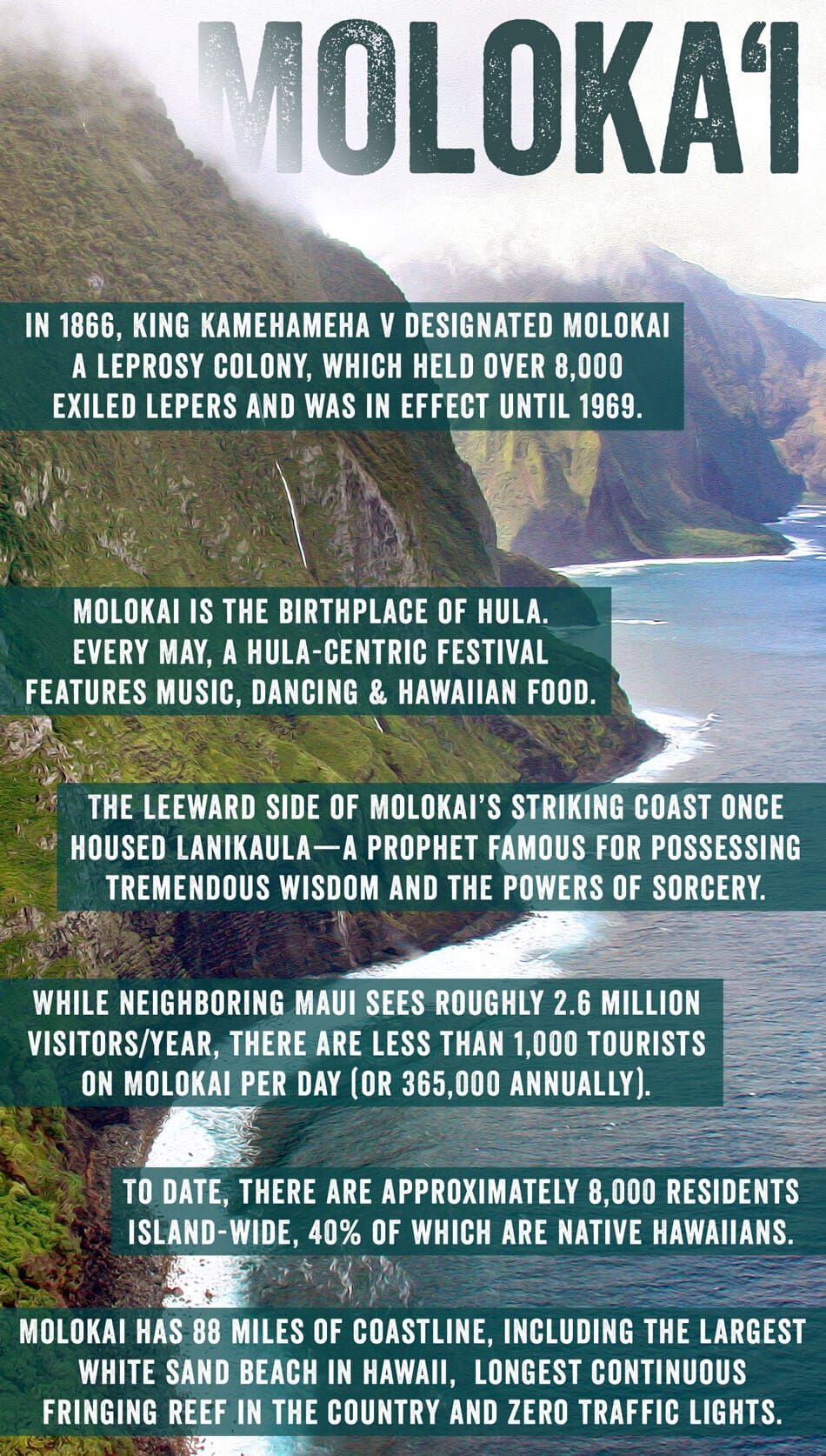
Commonly known as the Friendly Isle, this sparsely populated gem comprises part of Maui County and sits just eight miles off of Maui’s western shores.
Six Facts to Know About Molokai Before You Go
Whether you’re taking a ferry there for the day or planning a quiet escape, here are six facts to know before you go:
Molokai was once home to a leprosy colony.
Also known as Hansen’s disease, leprosy—a communicable disease that impacts the respiratory system and nerves and results in a telltale clustering of the skin—was once a worldwide epidemic, spurring countries to quarantine those afflicted with the then largely-misunderstood diagnosis.
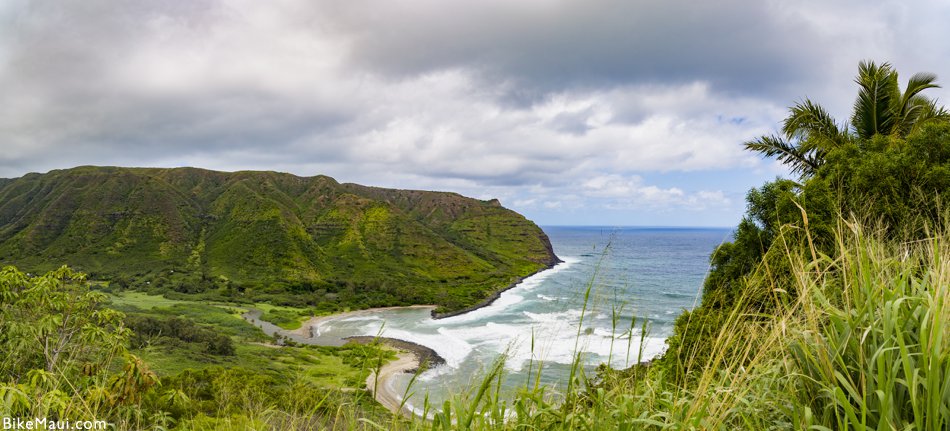
In 1866, Hawaii took note, and King Kamehameha V designated Molokai—the fifth largest island in the archipelago—a sanitarium for lepers, whose often conspicuous symptoms were feared and whose victims were stigmatized. Over 8,000 people were exiled to Molokai, the majority of them native Hawaiians.
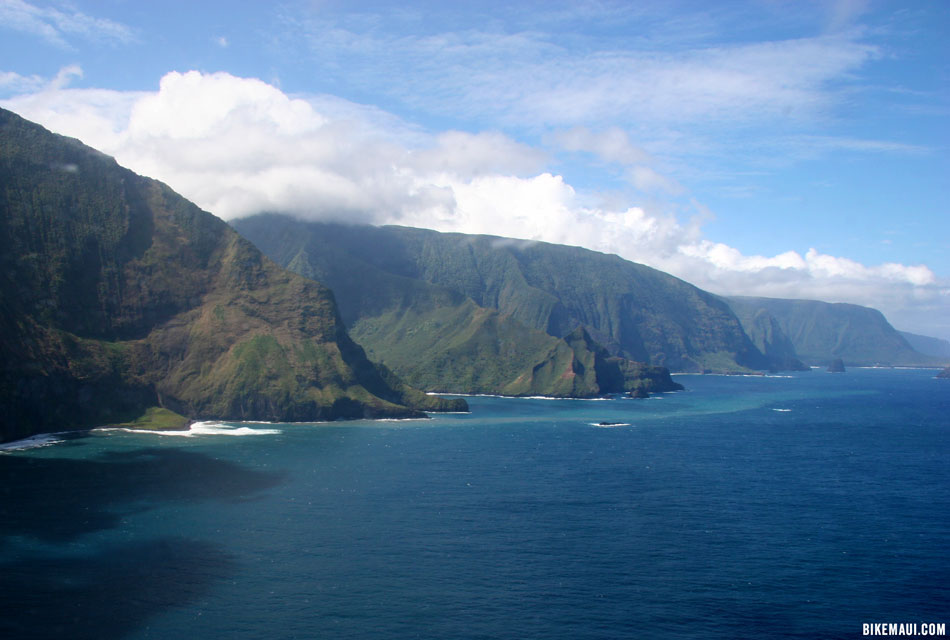
Shrouded by 2,000-foot sea cliffs on Molokai’s fertile Kalaupapa Peninsula, Kalaupapa transitioned from an ancient Hawaiian fishing village to one of the most well-known leper colonies on the planet (and prompting Jack London to write a searing account of his visit).
Isolation was held in effect until 1969; by then, the remaining survivors were either scarred for life—thereby dramatically complicating their integration into modern society—or had fallen in love with the settlement they’d called home since the sentence was put into place over a hundred years earlier. The government permitted them to stay until their demise; today it has six patients who remain in residence.
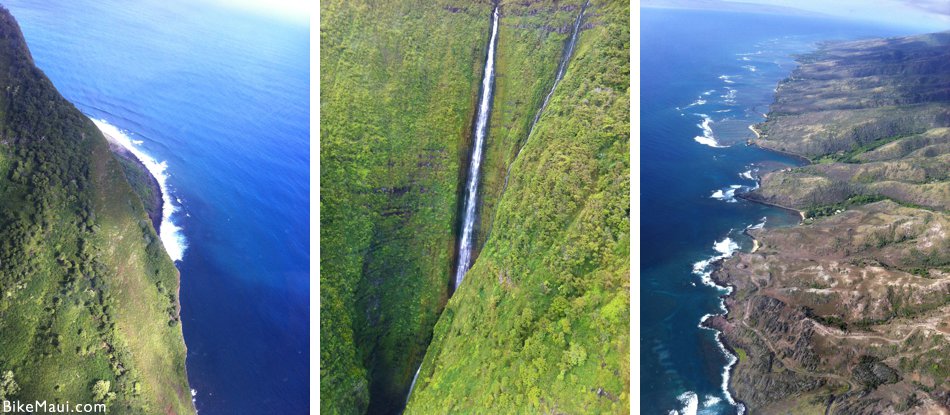
Now, visitors curious about its tragic, poignant past can take mule rides or assisted hikes down to Kalaupapa’s rustic shoreline. Now a National Park, it’s where Father Damien—a Roman Catholic priest and “martyr of charity”—died of the same disease he ministered.
Molokai is the birthplace of hula.
Hula is, inarguably, the unspoken language of the Hawaiian Islands, a lovely form of storytelling that dates back thousands of centuries.
While most islands assert to be the origin of this ancient art—who wouldn’t want to lay claim to such an honor?—general consensus insists that Molokai is the true home of this beloved luau staple.
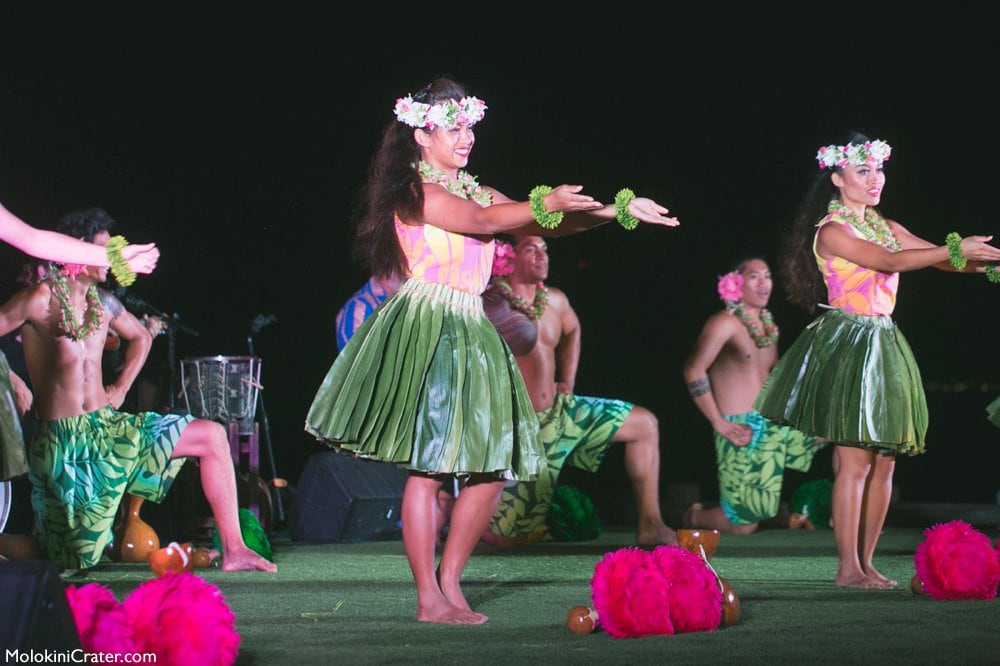
Hawaiian lore tells the story of Laka, a pan-Polynesian cultural luminary, who traveled from island to island spreading the lessons of her dance and chants and its impending position in Hawaiian traditions and history. It’s said that her first dance was performed on a hill in Kaana on the island’s western point. To this day, this title is celebrated every May at Molokai’s Ka Hula Piko—a hula-centric festival that features music, dancing and traditional Hawaiian food.
Molokai was once home to one of Hawaii’s most famous sorcerers.
The leeward side of Molokai’s striking coast once housed Lanikaula—a prophet famous throughout the islands for possessing tremendous wisdom and the powers of sorcery.
Simultaneously feared and highly sought, Lanikaula offered shelter and advice to veterans of war and those who had been religiously persecuted. Indeed, at one time, Molokai was considered a retreat for all Hawaiians, due in part to its reputation for having some of the islands’ most revered religious leaders.
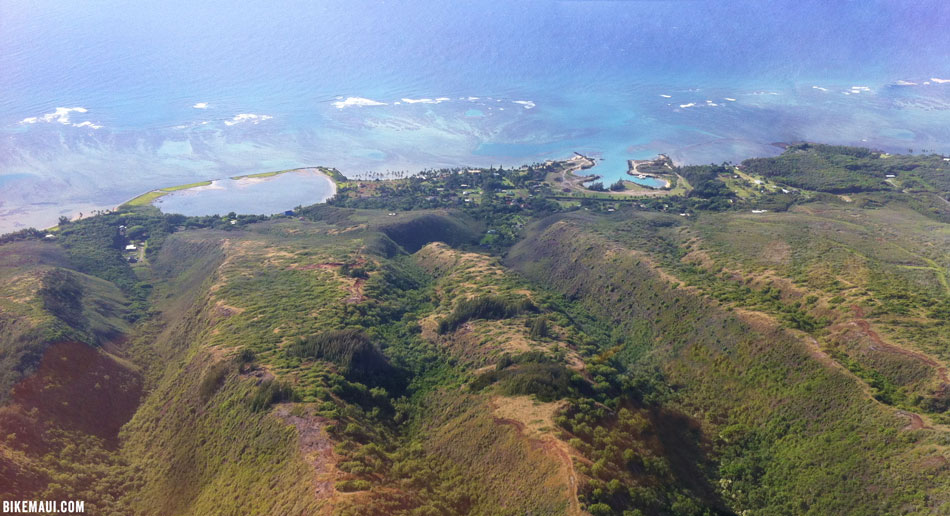
Lanikaula, who died in the 1500s, continues to be honored today at Puu Hoku Ranch in Molokai’s eastern region, where he’s believed to be buried in a thicket of kukui nut trees. Local legend maintains that the gravesite be duly respected, reciting the story of a farmer who tried to level the trees only to suffer from a stroke and die in poverty.
Molokai continues to maintain its Old Hawaii sensibility.
While Western contact for the other major islands began in 1778 with the arrival of Captain James Cook’s fleet on the shores of Kauai’s Waimea, Molokai was left largely untouched until Captain Dixon sailed in eight years later.
Consider it proper foreshadowing for what was to come: while today Oahu, Maui, the Big Island and Kauai are broadly modernized—home to Targets, considerable populations and towering resorts—Molokai deliberately moves at a much slower pace. There are no traffic lights, and, besides cottages, visitors have a choice between a single resort and five condo complexes, all of which have spotty Wifi at best. And while neighboring Maui sees roughly 2.6 million visitors per year, there are less than 1,000 tourists on Molokai per day (or 365,000 annually). To date, there are approximately 8,000 residents island-wide, 40% of which are native Hawaiians.
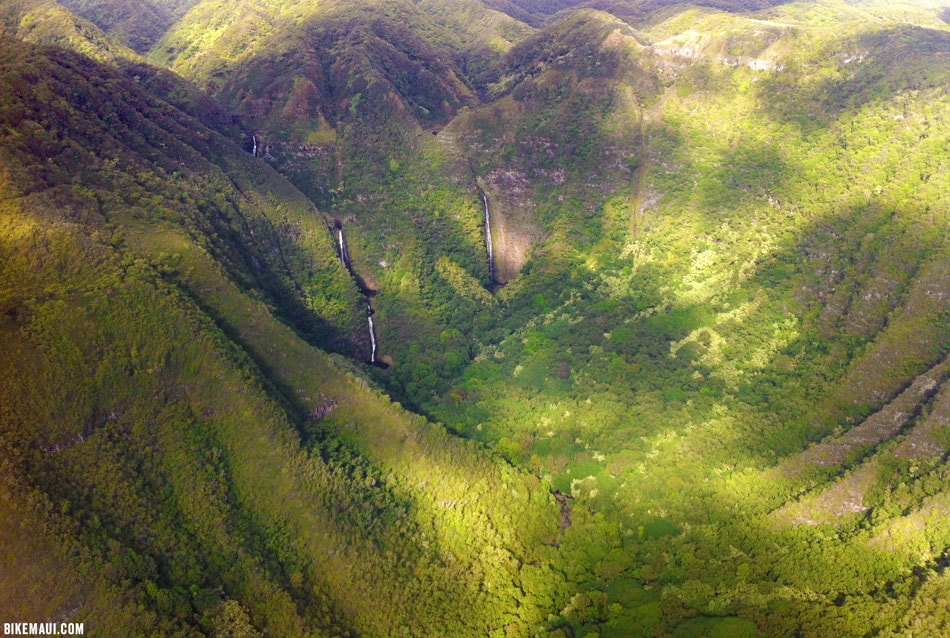
Think of it as a boon for those who do make their way to Molokai’s gorgeous shores: home to 88 miles of coastline, its beaches are pristine and predominately deserted, rendering it a sunbather’s paradise—particularly Papohaku, which, at three miles long, is one of the largest white sand beaches in Hawaii.
Molokai boasts the longest continuous fringing reef in the country.
Consider them the underwater equivalent of a forest: coral reefs are one of nature’s most spectacular feats, housing some of the most incredible Maui marine life to be seen, including the humuhumunukunukuapuaa, Hawaii’s state fish.
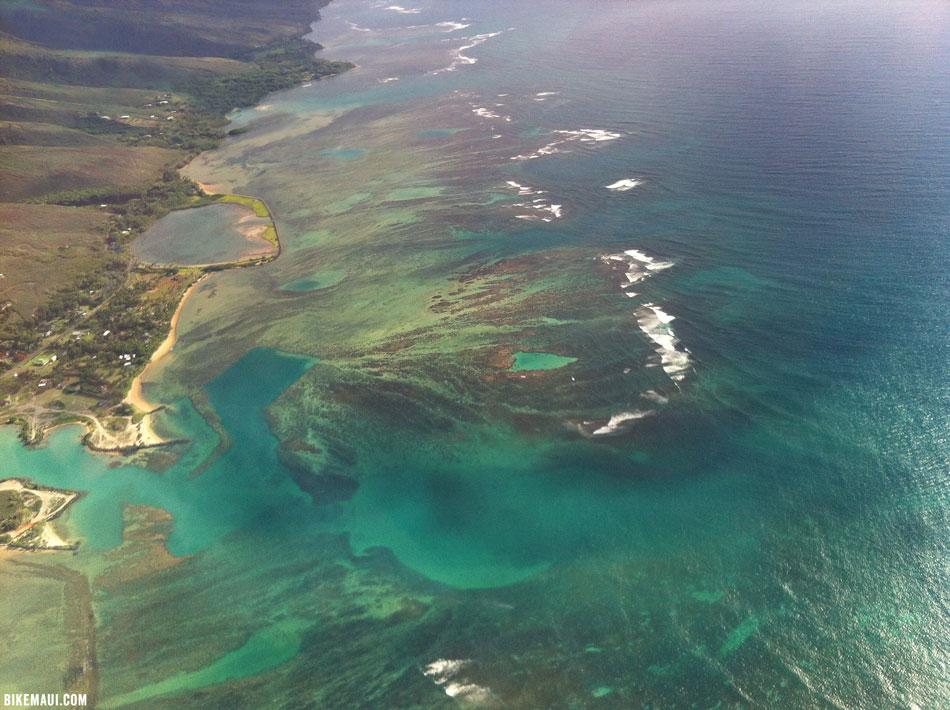
Molokai should know: it’s home to the largest continuous fringing reef in all U.S. holdings—a beauty that stretches 28 miles long on the southern coast of the island. Hawaiian Green Sea Turtles—otherwise known as honu—often frolic in these parts, while just off shore sightseers can take in the splendor of a migrating Humpback Whale.
…and one of the Aloha State’s oldest groves of coconut palms.
Kapuaiwa was put on the map in the 1860s, when King Kamehameha V (yes, the same king who imprisoned lepers on the island’s peninsula) designated 10 acres on Molokai’s southern shore to coconut trees.
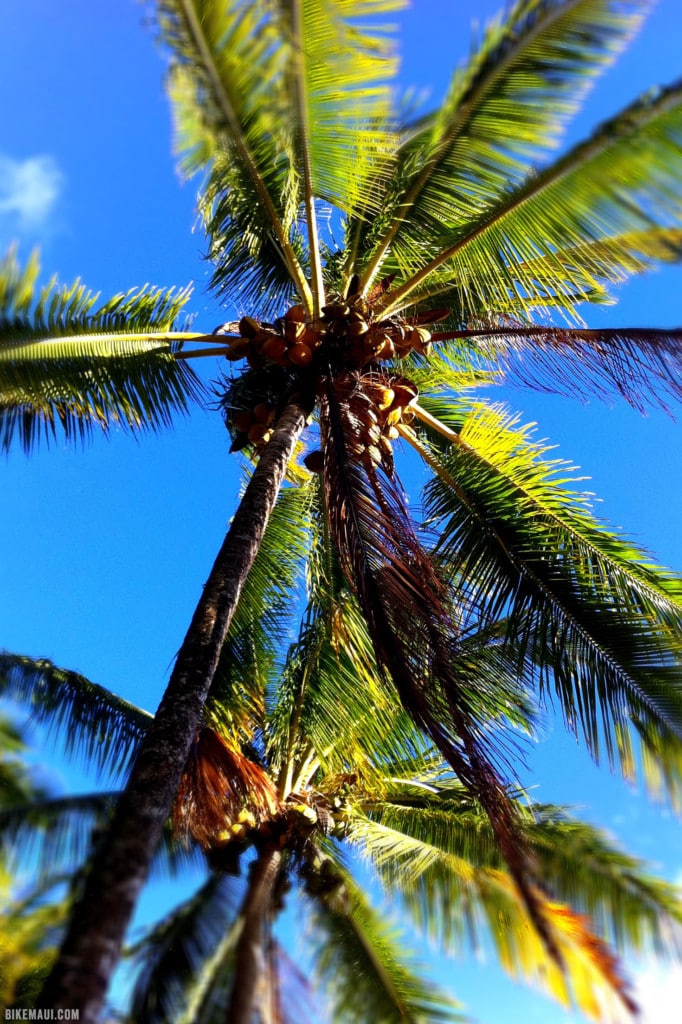
Once a sacred place kupuna (elders) deemed kapu (forbidden), Kapuaiwa now prohibits visitors from entering the grove due to threats of falling coconuts. Nevertheless, sunsets can still be relished just outside the generous copse. Framed by coconut palms or not, know this: no photos of Molokai need a filter—this is natural Hawaiian beauty at its finest.
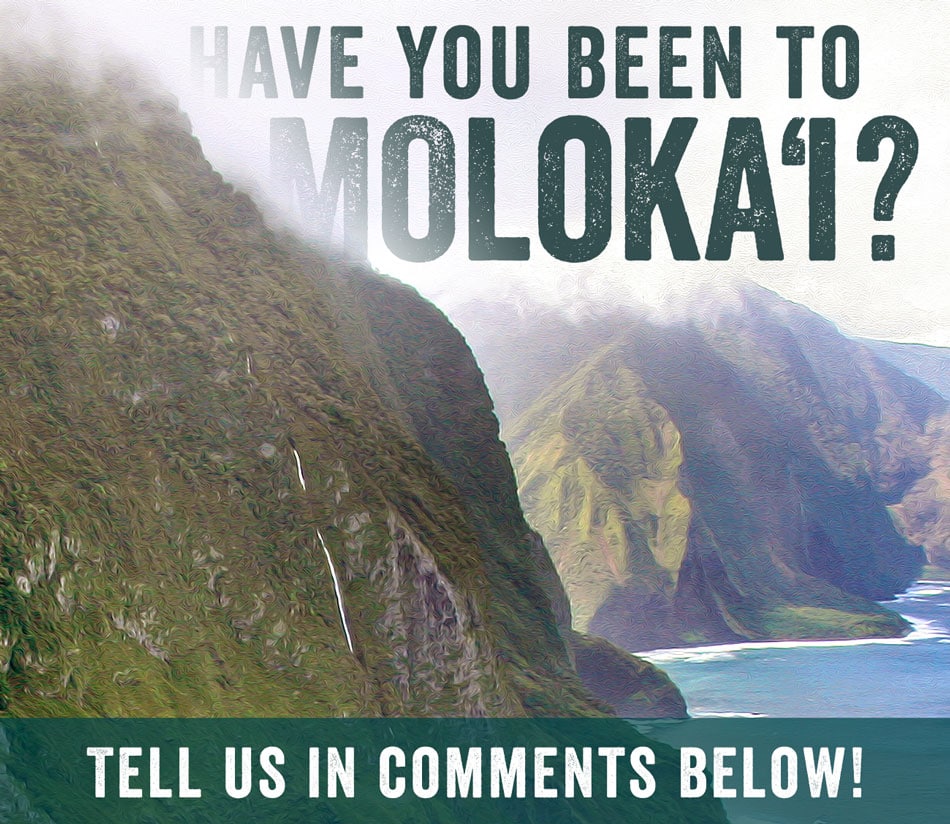
Many of the Molokai aerial photos are courtesy of Natalie Brown.

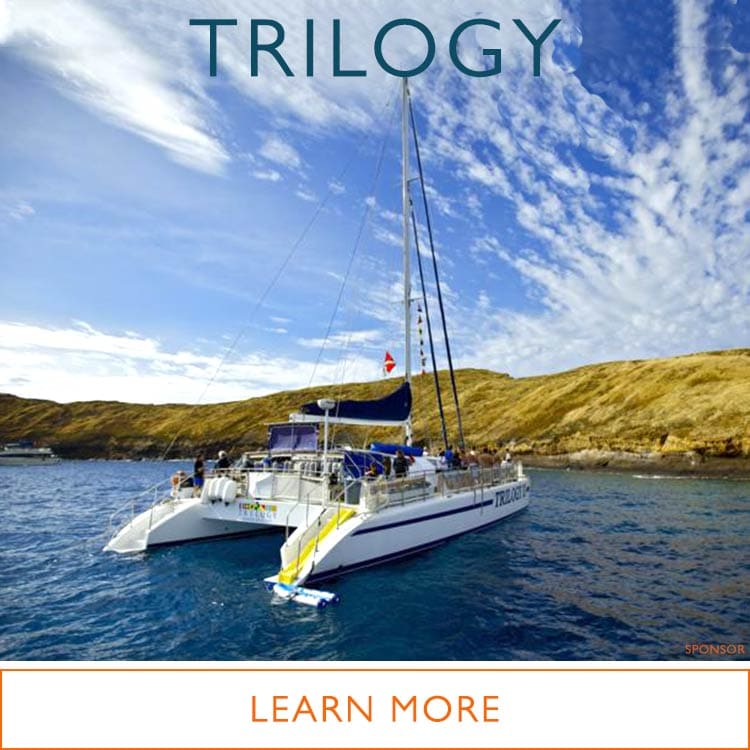



I have been there, it is overwhelmingly beautiful and mysterious, my favorite island, I picture it the way Hawaii used to be long ago and would love to return.
Our favorite island, when we lived in Hawaii this was our weekend getaway
Molocai was a place for the lepers? Was fr. San Damian passed away 1889.
I stayed there about 35 years ago but still remember how peaceful and beautiful it was
Yes. I and my family had the pleasure of staying at the ranch just before it closed. Will never forget the pleasure we had of the mule ride down the switchbacks to the leper colony. While it was still operational and still had a living population.Truly a venture that still lives in my memory. My wife is an avid hula dancer has been back for ceremonial hula.
I too had the pleasure experience going down to the leper colony on the mules, back in the year 1976 and it still lives in my memories. Will never ever forget it. ❤️
I have the privilege of spending time on Molokai in the mid-1990s. A beautiful Island and people. Hope to return one day with my family.
I was there in 1959 with a group from Kaneohe, Oahu when a Priest from the order of the Sacred Hearts of Jesus and Mary went to visit Fr. Damien’s grave. Finding it in disrepair, he returned to the Marine Corps Base on Kaneohe and recruited Marines to fly over several weekends with him to restore the church that Fr. Damien had, his grave site, etc. There was a convent there staffed by some nuns who came down to bring water and sweets to these Marines. In thanking the nuns, these Marines then repaired floors and several things in the convent that needed repair. Thus began a circle of thanks from all sides. The Chaplain at Kaneohe called me and told me to find out what these nuns could use and he would ship them over. In speaking with the nuns, they didn’t want anything. I told them they might as well tell me something because they were going to get something. One nun spoke up and said they could used a bicycle because they were still tending to some lepers who were settled there. The Chaplain immediately ordered bicycles for each of the nuns. In reply he nuns then invited the Chaplain and all the ladies from our outreach circle to come visit them.
Again, the Chaplain asked me to find out if anyone wanted to go over for the day. He knew someone that had a private plane and could take about 20 of us. All 20 of us flew over and landed at Kalaupaupa. The nuns entertained us with a picnic and a visit to their convent. We had the opportunity to go with a few nuns who had to tend to the lepers. What wonderful, warm, loving people they were and they were so grateful that we could do something for their wonderful nuns. A visit I will never forget. I kept in touch with one of the nuns for a few years and even sold some ceramic
angels that she would make. I took them to our Chapel and sold them outside and they sold immediately. I called her and ordered more and
we did that for several months. Somehow I lost touch with the nun who was transferred back home to her Order’s mother house, and I didn’t know any of the other nuns who wanted to continue this. People come in and out of your life and I will never forget my trip to Molokai and the wonderful day I had there. A lovely Island. It has a special place in my heart.
I used to live there,took me awhile to adjust to that life,it was not easy at first because I was a howely,meaning a white person,but I think I appreciated Molokai more when I came back to canada.there was absolutely no rush,better word would be no stress,I got used to not knowing what was going g on outside of Molokai I worked everyday but it never felt like work.would love to go back and finish the rest of my life there,I guess I could dream.
i READ YOUR REPORT AND FOUND IT LOVELY. I WILL PRAY FOR YOU TO BE ABLE TO LIVE THERE FOR THE REST OF YOUR LIFE,
MY HAWAIIAN PENPAL WHO I MET IN 1984 WHEN I WAS PREGNANT WITH MY SON WAITED IN THE AIRPORT FOR OUR DELAYED FLIGHT LIVES THERE NOW. SHE USED TO PERFORM IN THEIR HULA AND RIDE A DRESSED UP HORSE IN THEIR FESTIVITIES.
This is an amazing story. Thank you for sharing
Wow, what an amazing story. What a life experience! Thank you so much for sharing it. I would love to visit there!
My husband and I were lucky enough to take a glass bottom boat out to Molokai, and enjoy the day, snorkelling,
and sharing the beautiful waters with a group of dolphins, as well as so many spectacular species of fish ! The scenery is Magnificent! We were so blessed to be able to experience ..God’s Country!!.
I have been to Molokai and Maui and I am in Honolulu now. All three places are awesome. I really liked Molokai though because it was peaceful and there was less traffic.
I’m lovin Moloka’i with my Husband right now. Were from the dirty, crowded island Oahu🙁
I have not yet been, though I would love to trail run there. There no longer is a ferry to Molokai, correct? Unless something recently has changed…
I hope it’s our next island. I may not leave
We did the mule ride…still one of my favorite memories of my life……the people were amazing….still remember Harley and his mom….she drove a Kia Soul and got us back to just catch the ferry….sat at the coffee shop and listened to a wonderful gentleman playing his ukulele and singing…..wow…..I am floating back now……
Our family spent a beautiful weekend there with friends in August, 1971. What a beautiful, never-to-be forgotten place!
We first took a helicopter trip from Maui that stopped at Kalaupapa and it is impossible to believe the history of this beautiful site – I’ve read many books but it was still hard to imagine this now peaceful peninsula’s history. Our next trip was via ferry and included an all day Tour. Our guide Rudy was such a pleasure to spend the day with – the memories will stick with us forever and if we get the chance to go back we would hire him for a private tour and just do some things we personally would like to see – I would love to go snorkeling by the shores of Moloka’i. Don’t know if that item on my bucket list will ever get fulfilled but it’s a dream of mine. Our day with our small group of tourists was so much nicer than any huge bus full of people style tours which we do not enjoy and don’t do anymore. If you have a chance I highly recommend the trip although when we went he ferry was very old and had old Greyhound seats and a most disgusting little bathroom on it – that part was yucky. The ferry to Lanai was newer and nicer.
Nancy, thank you so much for sharing your experiences! We need more of this!!! People sharing the good and bad and what they learned along the way. Mahalo!
My uncle and Aunt lived in Kalaupapa. My first time to visit them was in the summer of1978. I had the time of my life. Fish almost everyday. Very relaxing and peaceful. I flew up to ‘topside’ and did a quick day tour of the island , and then walked down the mule trail back to Kalaupapa. There were a lot of residents back then.
Having been stationed on Molokai in 1958 I have learned to love the island and it’s people. While in the Marine Corps we built a barb wire fence on the North west corner off of MoOmome Beach. It was the best tome of my life. Since then my wife, family and I have been back the month of April for many many years. We have been to many places in the world but Molokai is bar far THE most beautiful of all. Much Mahalo and Aloha. Jerry&Carol Finn
I had the rare opportunity to be stationed on this island for 6 months in1974 at the marine base training area at that time located next to the local airport you could walk out the door in the morning and view mountain goat on the side of the mountains deer in the pineapple fields . I have never forgotten the people , the leper colony or the incredible views of both land and sea from the top of the cliffs overlooking kuala papa . The chief of police at the time would visit often close friends with the gunny our supplies were always brought over by chopper from Kāneʻohe Bay . one of my best duty stations ever
I served in the US Navy submarine service in 1960 – 1961, aboard a submarine operating out of Pearl harbor. Upon returning from sea duty to the islands, the boat WAS NOT ALLOWED to visit/moor at Molokai Island – it population was over 9,000 person, yet 8,000 inhabitants carried leprosy. Once, while moored pier side at Pearl Harbor, I and a crewmember left the boat an headed to the submarine base barracks, At the land-end of the pier were two Hawaiian men; each man had contracted leprosy and displayed results so the islands – no fingers and toes on all hands and feet. One man had his left hand missing.
This is September 2023. Since I read the book called Father Damien, the Leper I have been wanting to go to Molokai. The book is incredible. Very datailed about how those poor people were taken to the Island if they were suspected to have Leprosy. Even a pimple would send them out there. No one ever left. Interestingly Father Damien remained uninfected for I think almost 20 years. Eventually the disease did get him. He never ever forsaken those people. I would love to visit his grave site. Now that I have read all these nice comments about the Island, I will make a good effort to travel there.
I lived on Moloka’i from 1969 – 1971; drove a school bus for Ben Hussey from the high school out to East End, past Ah Ping’s store, and back. (My riders had familiar names such as Akiona, Victorino, von Tempsky, Solitario.) The people of Moloka’i became dear to my heart–still are! And although it took them a while, many of those I encountered each day came to respect me and drew me into their family life. I was the only haole in most of the ‘social settings’ I found myself in, but I was never a ‘tourist’ in my thinking; instead, a student of them and their environment. When I left, one of my coworkers told Ben that I was ‘da bes d… haole I eva met’. I took that as high compliment! I still miss that place and time–even now, my mind often responds to a current situation or event in my life with Hawai’i pidgin exclamations. If I had not subsequently made a life far from Moloka’i, I’d gladly live there again. Maybe, one day……
My wife and I took our 7 year old daughter to vacation at Molokai Ranch for part of our Hawaii trip in 1999. Had an incredible experience enjoying the old Hawaii. So different than Maui or Oahu. We met a family from Honolulu that was there on vacation; just like us Minnesotans who go “up north” to our lake cabins to get away from the “city”. I would love to visit again, but would like a place like the ranch to stay at.
I don’t think anything like it exists today.
Thanks for sharing, James! Wow, that’s sounds amazing!
My wife and I visited Molokai as part of a trip which also included the big island and Kauai. We’re hooked. We are going back for an extended visit in May of 2025. We loved the scenery, the people, and especially the slow pace. Everyone you meet asks where you are from and is eager to strike up a conversation. We can’t say enough about the place and are counting the days until we go back.